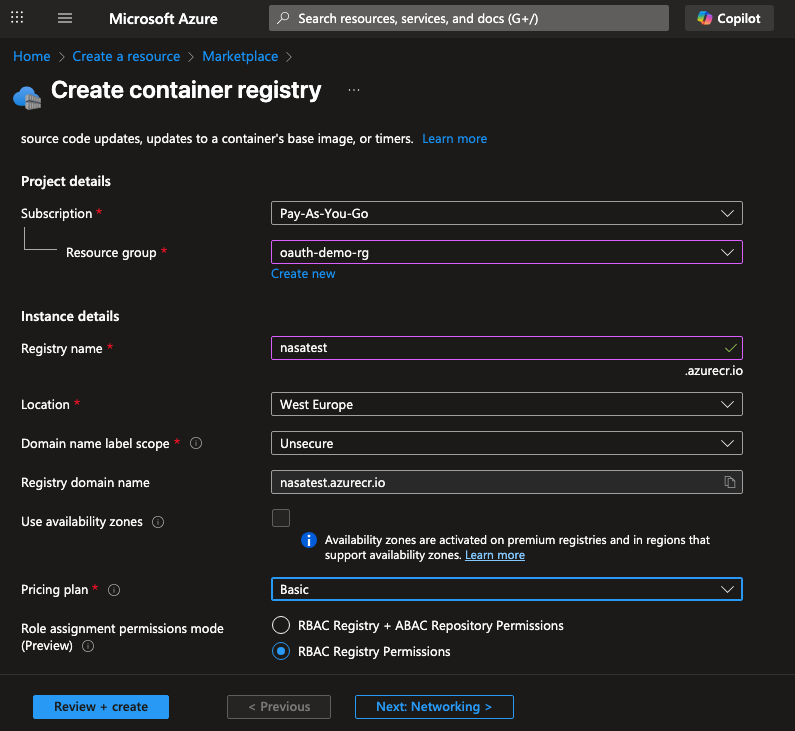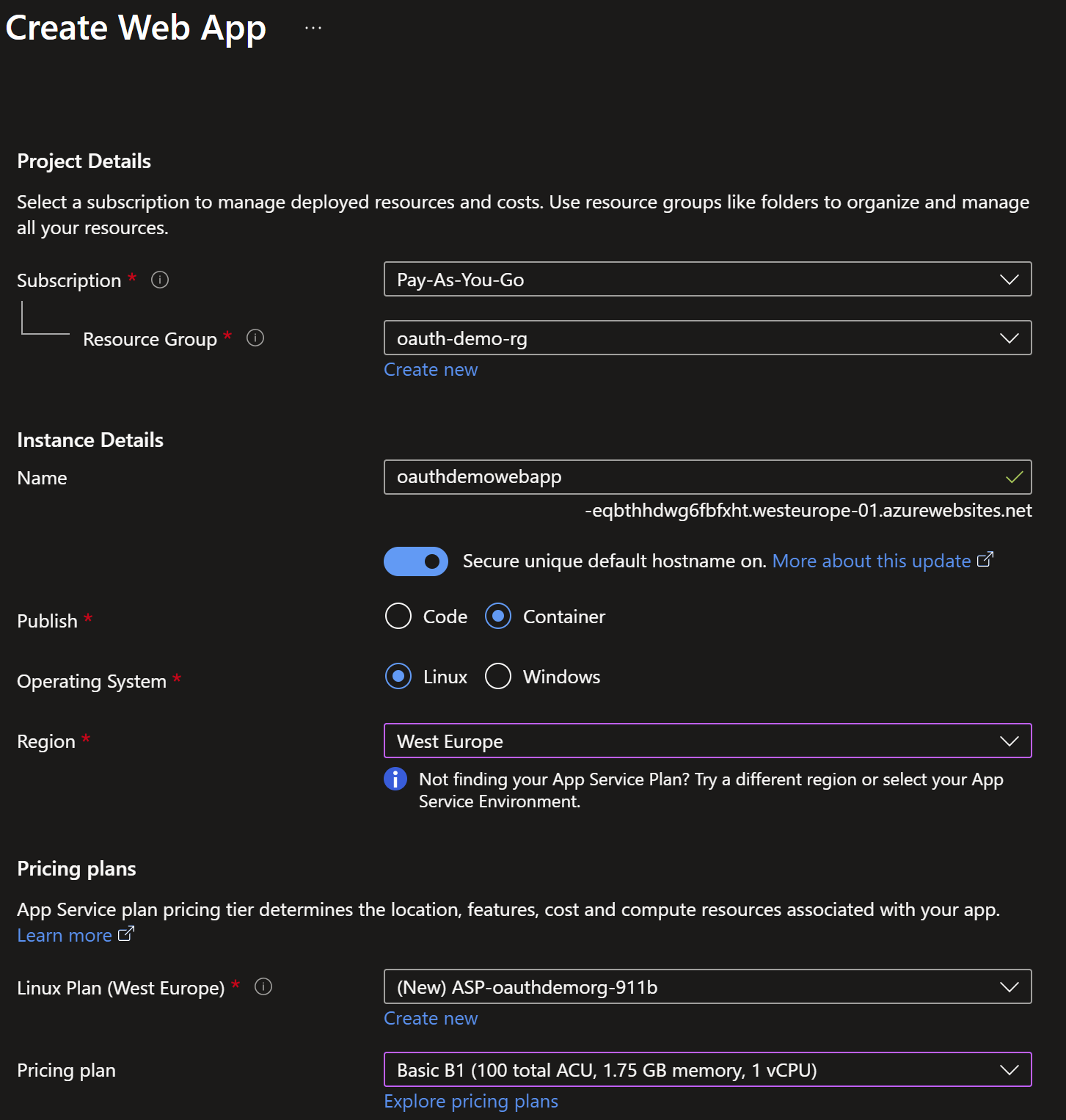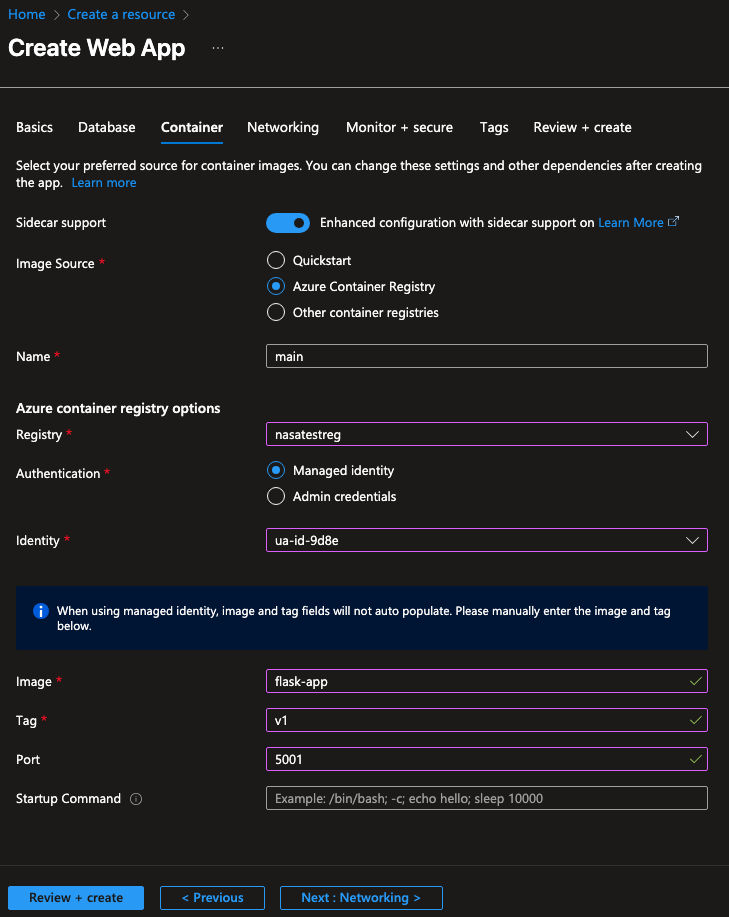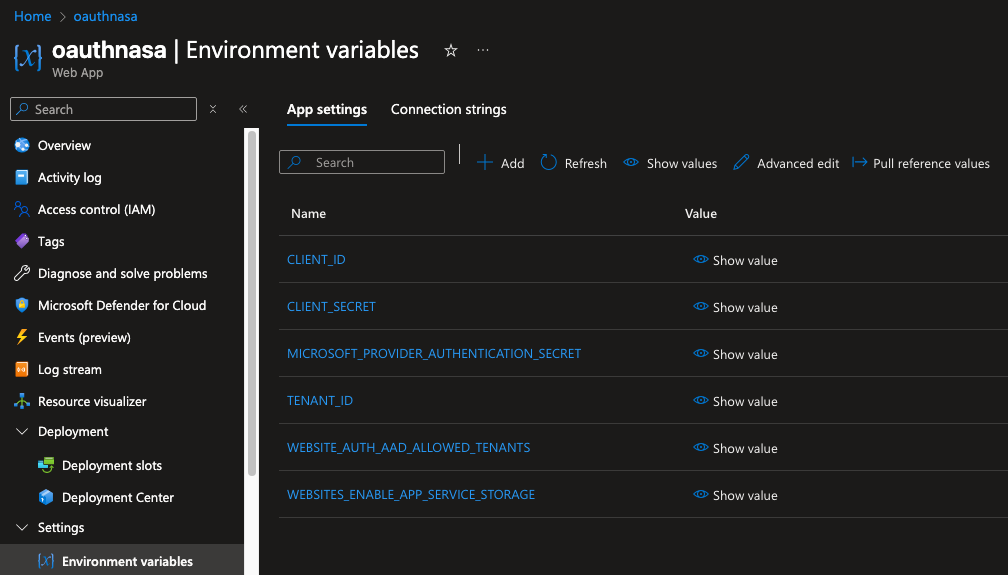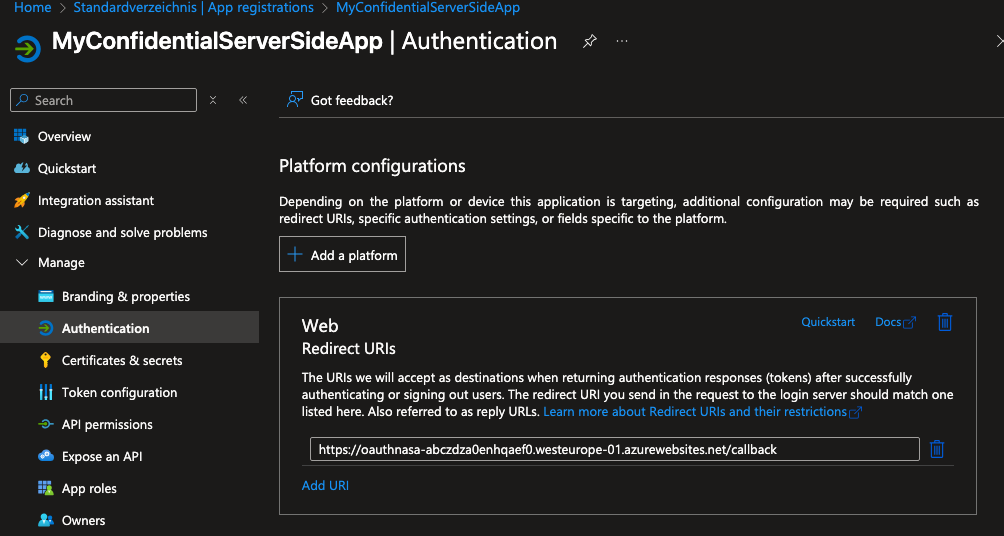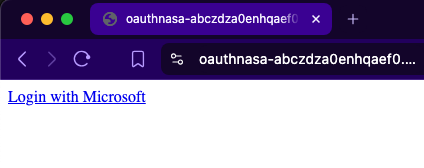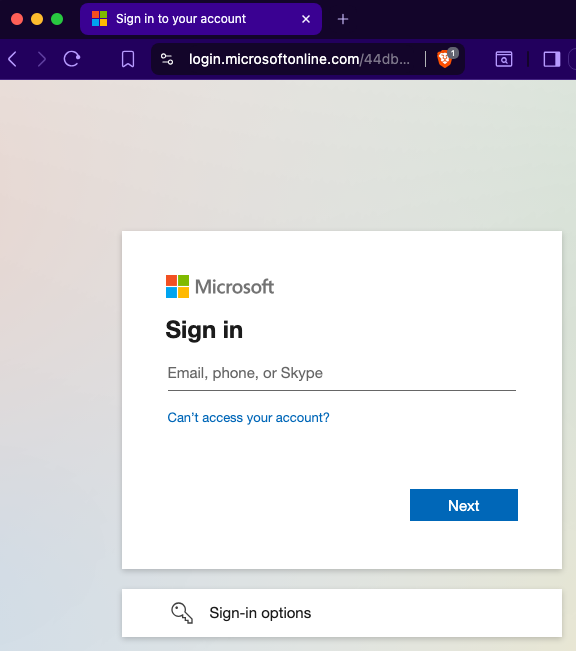OAuth 2.0 - Tutorial 2 - Azure Server Side Python WebApp Auth Code Flow - Entra ID
Introduction
In the previous tutorial Localhost Python WebApp Auth Code Flow with Entra ID , we demonstrated using a localhost web app as a “server-side app” (confidential client) with the Authorization Code Flow. In this tutorial, we will deploy the app to Azure, making it a true “server-side app” where users cannot access secrets.
The following steps are required to deploy the app to Azure:
- Create an Azure Container Registry
- Create a Dockerfile and publish the image to the registry
- Create an Azure Web App using this container
- Add environment variables (tenant, client ID, client secret)
- Add a new redirect URI to the app registration
- Update the redirect URI in the app code
Prerequisites
- Microsoft Azure Tenant with active Subscription
- Docker installed
- Azure CLI installed
- UV installed: UV Installation
Create Azure Container Registry
Create an Azure container registry where you can store your docker images:
Create a Docker Image and publish it to the registry
requirements.txt
First, in your app folder (e.g., flask_app), create a requirements.txt file listing all the dependencies your app will use in the Docker image:
flask==3.1.2
msal==1.34.0
python-dotenv==1.1.1
Dockerfile
Next, create a new Dockerfile with the following content:
FROM python:3.11
WORKDIR /code
COPY requirements.txt .
RUN pip3 install -r requirements.txt
# copy your actual python code
COPY main.py .
# Add some debugging
RUN echo "Files in /code:" && ls -la /code
# Expose the port that the app will run on
EXPOSE 5001
CMD ["flask", "--app", "main.py", "run", "--host", "0.0.0.0", "--port", "5001"]
Python Source Code
The actual code for the Python Flask sample web app is largely the same as in the previous tutorial:
import logging
logging.basicConfig(level=logging.DEBUG)
from flask import Flask, session, redirect, request, url_for
from dotenv import load_dotenv
import msal
import uuid
import os
import requests
app = Flask(__name__)
app.secret_key = os.urandom(24) # Needed for session
# Specify the path to the .env file
dotenv_path = ".env" # Update this with the actual path
# Load the .env file -> is not used in "prod" web app only on local development
load_dotenv(dotenv_path=dotenv_path)
# Config
config = {
"client_id": os.getenv("CLIENT_ID"),
"authority": f"https://login.microsoftonline.com/{os.getenv('TENANT_ID')}",
"scope": ["User.Read"],
"redirect_uri": os.getenv("REDIRECT_URI"),
"client_secret": os.getenv("CLIENT_SECRET"),
}
def build_msal_app():
return msal.ConfidentialClientApplication(
client_id=config["client_id"],
authority=config["authority"],
client_credential=config["client_secret"],
)
@app.route("/")
def index():
if "user" in session:
user = session["user"]
return f"""
<h2>Welcome {user['displayName']}</h2>
<p>Email: {user.get('mail') or user.get('userPrincipalName')}</p>
<a href="/logout">Logout</a>
"""
return '<a href="/login">Login with Microsoft</a>'
@app.route("/login")
def login():
msal_app = build_msal_app()
flow = msal_app.initiate_auth_code_flow(
scopes=config["scope"],
redirect_uri=config["redirect_uri"],
state=str(uuid.uuid4()),
)
session["auth_flow"] = flow
return redirect(flow["auth_uri"])
@app.route("/callback")
def callback():
msal_app = build_msal_app()
try:
result = msal_app.acquire_token_by_auth_code_flow(
session.get("auth_flow", {}), request.args
)
except ValueError:
return "Authentication failed", 400
if "access_token" in result:
session["access_token"] = result["access_token"]
# Call Microsoft Graph to get user info
graph_resp = requests.get(
"https://graph.microsoft.com/v1.0/me",
headers={"Authorization": f"Bearer {result['access_token']}"},
)
if graph_resp.ok:
session["user"] = graph_resp.json()
return redirect(url_for("index"))
else:
return f"Graph API error: {graph_resp.text}", 500
return f"Error: {result.get('error_description')}", 400
@app.route("/logout")
def logout():
session.clear()
return redirect(url_for("index"))
if __name__ == "__main__":
app.run(host="0.0.0.0", port=5001, debug=True)
Build Docker Image
Note: On macOS, it is necessary to build the Docker image explicitly for linux/amd64:
IMG_NAME=flask-app
cd flask_app && \
docker buildx build --platform linux/amd64 -t ${IMG_NAME} .
Log in to your Azure Container Registry:
ACR_NAME=nasatestreg
az login # First Login with the Azure CLI
az acr login --name $(ACR_NAME) # Login to you specific Azure Container Registry
Now, tag and push your image to your Azure Container Registry:
docker tag ${IMG_NAME} $(ACR_NAME).azurecr.io/${IMG_NAME}:v5
docker push $(ACR_NAME).azurecr.io/${IMG_NAME}:v5
Create an Azure Web App
Next, create an Azure Web App:
Use the container image you created earlier:
Configure Environment Variables
We use environment variables to provide client information such as client ID, secret, tenant id and redirect URI. Add them with the correct names to your app:
New Redirect URI for your App Registration
Your app registration (created in part 1: Localhost Python WebApp Auth Code Flow with Entra ID ) only had a redirect URI pointing to your localhost address. Since the app now runs on an Azure Web App Service, you need to update this:
Find your new URL in the Azure Web App’s Overview section under Default Domain (for simplicity, we use the default domain). Copy this domain and go to the app registration you created in the previous tutorial. Replace localhost with your new URI and add /callback (as used in the Python code).
Test the OAuth flow
Link it redirects you:
https://login.microsoftonline.com/YOUR-TENANT-ID/oauth2/v2.0/authorize?
client_id=be4099ac-8a21-4cb1-941e-dbd62563b379&
response_type=code&
scope=User.Read+offline_access+openid+profile&
state=92ec2536-8bb8-4c68-9c52-81fc7718c26b&
code_challenge=QW-jO9BfBjCilaVtntzgptICnjrXnY4fnThJEfWEcMo&
code_challenge_method=S256&
nonce=e2671ebbd5e72c8c36ee98b842db7ee39dd1bbb2321b2797b80a2504872e9a09&
client_info=1&
sso_reload=true
This time, it does not ask for consent again because you already granted consent for the same app in the previous tutorial.
